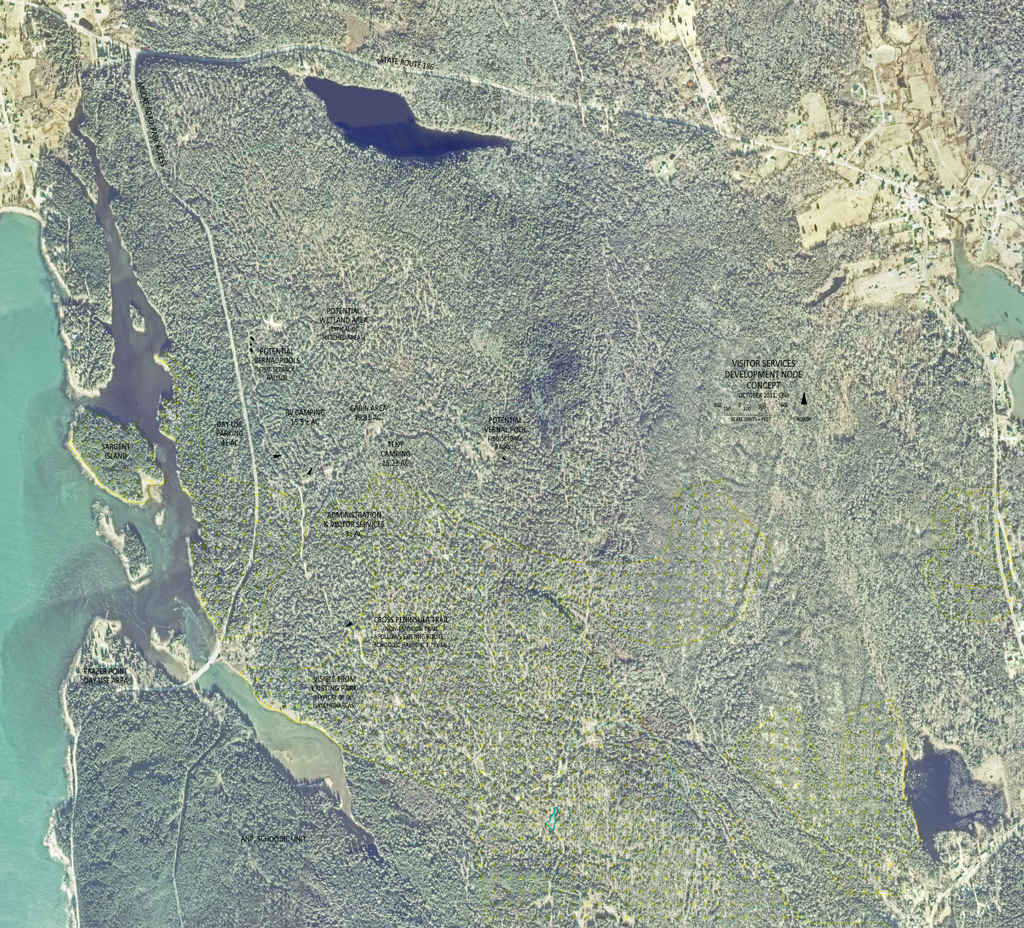Schoodic Woods
Schoodic Woods – Project Vision & Guiding Principles
PROJECT VISION
Create camping and day-use opportunities that complement and are in context with the natural, built, and programmatic offerings of the adjacent Acadia National Park Schoodic Unit. The project intends to provide a user experience that maximizes one’s understanding and appreciation of the natural environment through an appropriate interpretation of the natural and built environment, including explanatory, interpretive opportunities, and opportunities for self-discovery project’s diverse experiential offerings.
- Project Goals & Guiding Principles (not listed by priority or importance; each project element should address at least one, and ideally as many as possible)
- Minimize impacts to the existing natural environment
- Create a facility that presents itself as being a seamless continuation of the Schoodic Unit
- Maximize opportunities for users to experience the diverse ecosystems of the parcel, strive for universal accessibility.
- Maximize the experience and aesthetic of the natural environment
- Create distinctive features in context with, yet define, the development’s sense of place
- Interpret the site’s natural and built environments with the goal of increasing understanding of their sustainable coexistence
COMPONENTS OF PROJECT SCOPE
The scope of the Schoodic Woods project is complex and comprehensive. As such, the following Components are offered to aid in understanding the Project Scope. Sub-bullets are representative of items included in each component and may overlap into different components.
Off-site Components
- Site Entry Experience and Access
- Wayfinding and signage from US Route 1
- Gateway and/or entry experience at State Route 186 and along Moore Road through to Fraser Point/Schoodic Unit boundary
- Alternative forms of transportation (Shuttle/bus from main Park, dedicated peninsula shuttle, ferry/water access, waiting stations/facilities, etc.)
- Moore Road repair/improvements (and disposition of road: ownership vs. local road designation)
- All land south of SR 186 and either side of Moore Road is part of the project except the corner lot, which is for sale
- Utilities
- Relocation of overhead utility lines (underground or hidden aerial corridor)
- Evaluation of sanitary sewerage and potable water connection to town facilities versus self-contained, on-site systems
- Telecommunications service access
- Public/Local Project Support
- The property is currently providing tax revenue for the town, and presently zoned (Single Family Residential), it is anticipated to be future revenue. Conservation will modify the revenue stream.
On-site Components
- Interpretation/Education
- This concept overarches all on-site components, as may be appropriate.
- Overnight Use – Camping
- Vehicular camping (recreational vehicle & vehicle-trailer sites, with appropriate support facilities and utilities)
- Tent camping (vehicle-tent sites and walk-in sites, with appropriate support facilities and utilities)
- Support facilities (restroom/shower buildings, administration building, pavilions, group camping facilities, maintenance building, etc.)
- Vehicular circulation for camping and associated facilities
- Pedestrian circulation for camping and associated facilities
- Stormwater and wastewater mitigation
- Campground host facilities
- Day Use – Recreation and Interpretation
- Cross-peninsula access trails (two, carriage road type)
- Pedestrian trails (to/through various environs, overlooks/observation stations, connections between project elements and town/Schoodic Unit, etc.)
- Day use vehicular circulation and parking (+/- 200 vehicles)
- Amphitheater for presentations (seating for +/-75)
- ‘Studio In the Woods’ to complement ANP’s Artist in Residency program.
- Day-use shelter
- Night-sky observation facility








